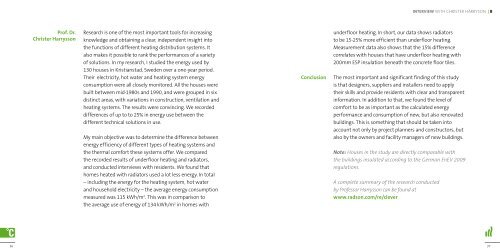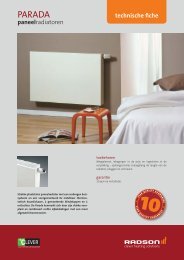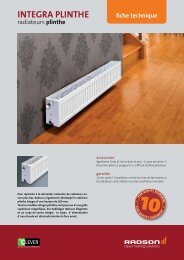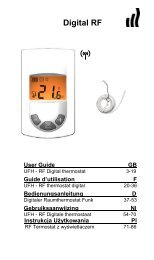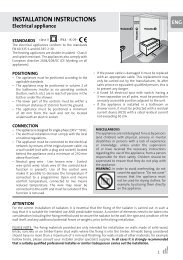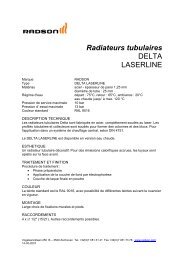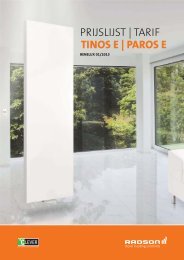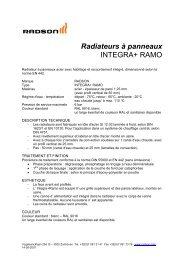Download - Purmo Radson
Download - Purmo Radson
Download - Purmo Radson
You also want an ePaper? Increase the reach of your titles
YUMPU automatically turns print PDFs into web optimized ePapers that Google loves.
interview with Christer harryson | B<br />
Prof. Dr.<br />
Christer Harrysson<br />
Research is one of the most important tools for increasing<br />
knowledge and obtaining a clear, independent insight into<br />
the functions of different heating distribution systems. It<br />
also makes it possible to rank the performances of a variety<br />
of solutions. In my research, I studied the energy used by<br />
130 houses in Kristianstad, Sweden over a one-year period.<br />
Their electricity, hot water and heating system energy<br />
consumption were all closely monitored. All the houses were<br />
built between mid-1980s and 1990, and were grouped in six<br />
distinct areas, with variations in construction, ventilation and<br />
heating systems. The results were convincing. We recorded<br />
differences of up to to 25% in energy use between the<br />
different technical solutions in use.<br />
My main objective was to determine the difference between<br />
energy efficiency of different types of heating systems and<br />
the thermal comfort these systems offer. We compared<br />
the recorded results of underfloor heating and radiators,<br />
and conducted interviews with residents. We found that<br />
homes heated with radiators used a lot less energy. In total<br />
– including the energy for the heating system, hot water<br />
and household electricity – the average energy consumption<br />
measured was 115 kWh/m 2 . This was in comparison to<br />
the average use of energy of 134 kWh/m 2 in homes with<br />
Conclusion<br />
underfloor heating. In short, our data shows radiators<br />
to be 15-25% more efficient than underfloor heating.<br />
Measurement data also shows that the 15% difference<br />
correlates with houses that have underfloor heating with<br />
200mm ESP insulation beneath the concrete floor tiles.<br />
The most important and significant finding of this study<br />
is that designers, suppliers and installers need to apply<br />
their skills and provide residents with clear and transparent<br />
information. In addition to that, we found the level of<br />
comfort to be as important as the calculated energy<br />
performance and consumption of new, but also renovated<br />
buildings. This is something that should be taken into<br />
account not only by project planners and constructors, but<br />
also by the owners and facility managers of new buildings.<br />
Note: Houses in the study are directly comparable with<br />
the buildings insulated according to the German EnEV 2009<br />
regulations.<br />
A complete summary of the research conducted<br />
by Professor Harrysson can be found at<br />
www.radson.com/re/clever<br />
36<br />
37


